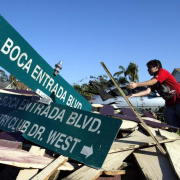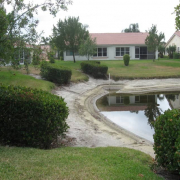New Year Drainage Checkup!
New Year Drainage Checkup!
The New Year brings hope, optimism, and new opportunities. It’s the perfect time to ensure that all systems, including your drainage infrastructure, are functioning efficiently. In South Florida, the dry season—running from mid-October to May—is the ideal period for residential communities to inspect their drainage systems and make any necessary repairs. Addressing these issues now will better prepare the community for the upcoming wet season.
A solid understanding of this infrastructure can lead to significant savings in time and money while reducing the risk of potential problems. Below is a brief questionnaire and checklist designed to encourage a proactive approach and help you maintain preparedness throughout the year.
Are you familiar with the community’s drainage infrastructure?
- Understand the community’s responsibility regarding flood control
- Review the stormwater and drainage permits provided by SFWMD/LWDD
- Locate discharge control structures, lakes, pipe connections, outfalls, inlets, and swales
- Understand the type of discharge control structure (fixed, flashboard, or operable),
- Learn the designed normal and high-water elevation of the stormwater pond and structure
Has the community board of directors identified the individuals responsible for maintaining and operating the community’s drainage infrastructure?
- Create a Community Drainage Committee
- Annually provide contact names, phone numbers, and e-mails via the online form at https://www.lwdd.net/storm-response
- Ensure individuals are physically able and are available year-round
- Provide access to equipment such as a crowbar, bolt cutter, and raingear
Does the community conduct regular inspections of its drainage infrastructure?
- Ensure swales, outfalls, pipes, and inlets are free of debris and water can flow freely
- Exercise (open and closed) the Emergency Operable Discharge Control Structures before storm season, if applicable
- Have the drainage system inspected at least every 5 years by a Florida-licensed stormwater engineer
- Report any identified issues with the drainage connection in the LWDD Right-of-Way to the LWDD Field Representative
- Exercise (open and closed) the Emergency Operable Discharge Control Structures before storm season, if applicable
Do you educate the community on its neighborhood plan of action?
- Review educational resources found at https://www.lwdd.net/storm-response
- Inform residents on flood control responsibilities and the neighborhood plan of action
- Sign up for email notifications at https://www.lwdd.net/storm-response
- Circulate flood control information to the community via newsletter, e-mail, or bulletin board
Has the community created an emergency response plan?
- Identify how the community will respond during a severe storm
- Locate plans identifying the location and type of drainage infrastructure
- Store the emergency response plan in an easily accessible location
- Incorporate the plan into community documents to be passed on to new board members
- Obtain authorization from LWDD before opening a control structure
Do you know how to contact LWDD for authorizations, updates, and emergency reporting?
- Know the LWDD Office Hours are Monday – Friday from 8:00 a.m. to 5:00 p.m.
- Share the main phone number and email EOC@lwdd.net 561-498-5363 with individuals responsible for maintaining and operating the community’s drainage infrastructure
- Watch for Weather Alerts and Instructions posted on LWDD at https://www.lwdd.net/storm-response
If you have any questions, don’t hesitate to contact us at Info@lwdd.net.






